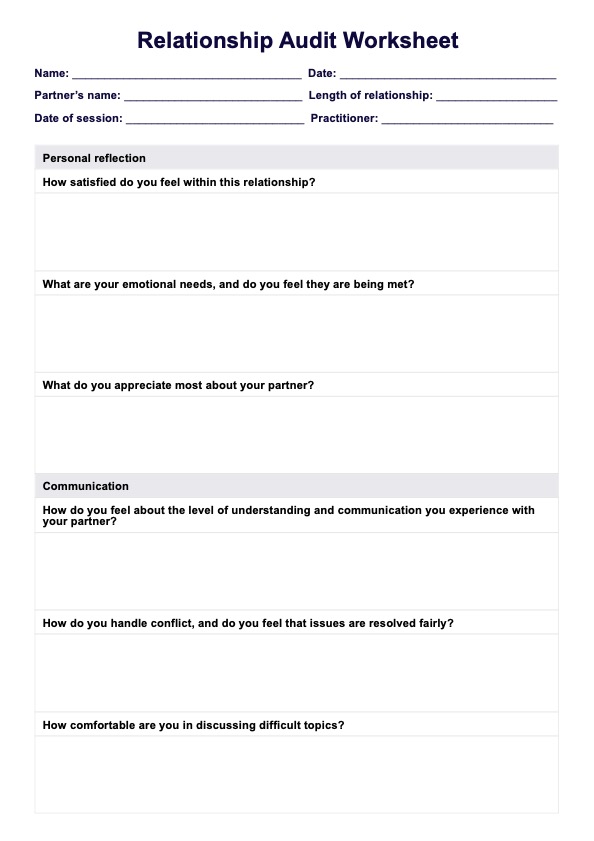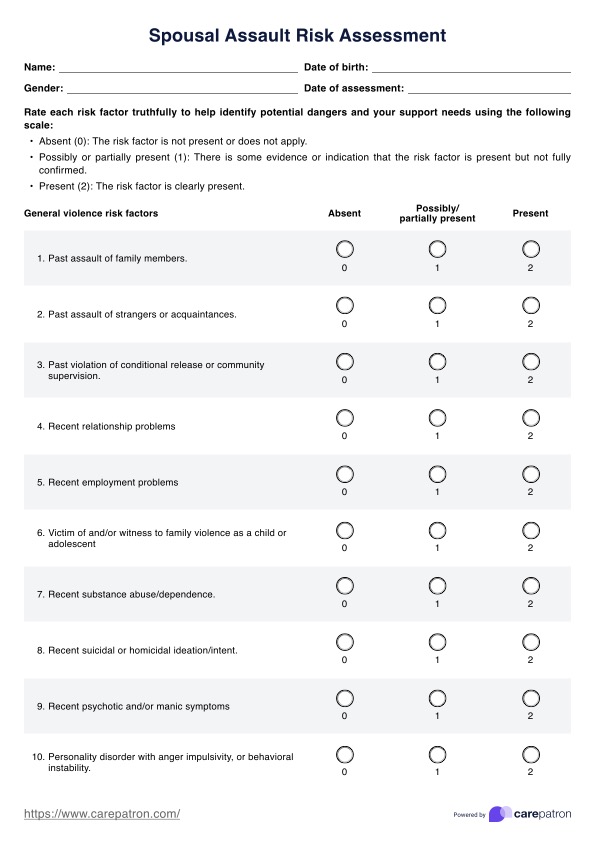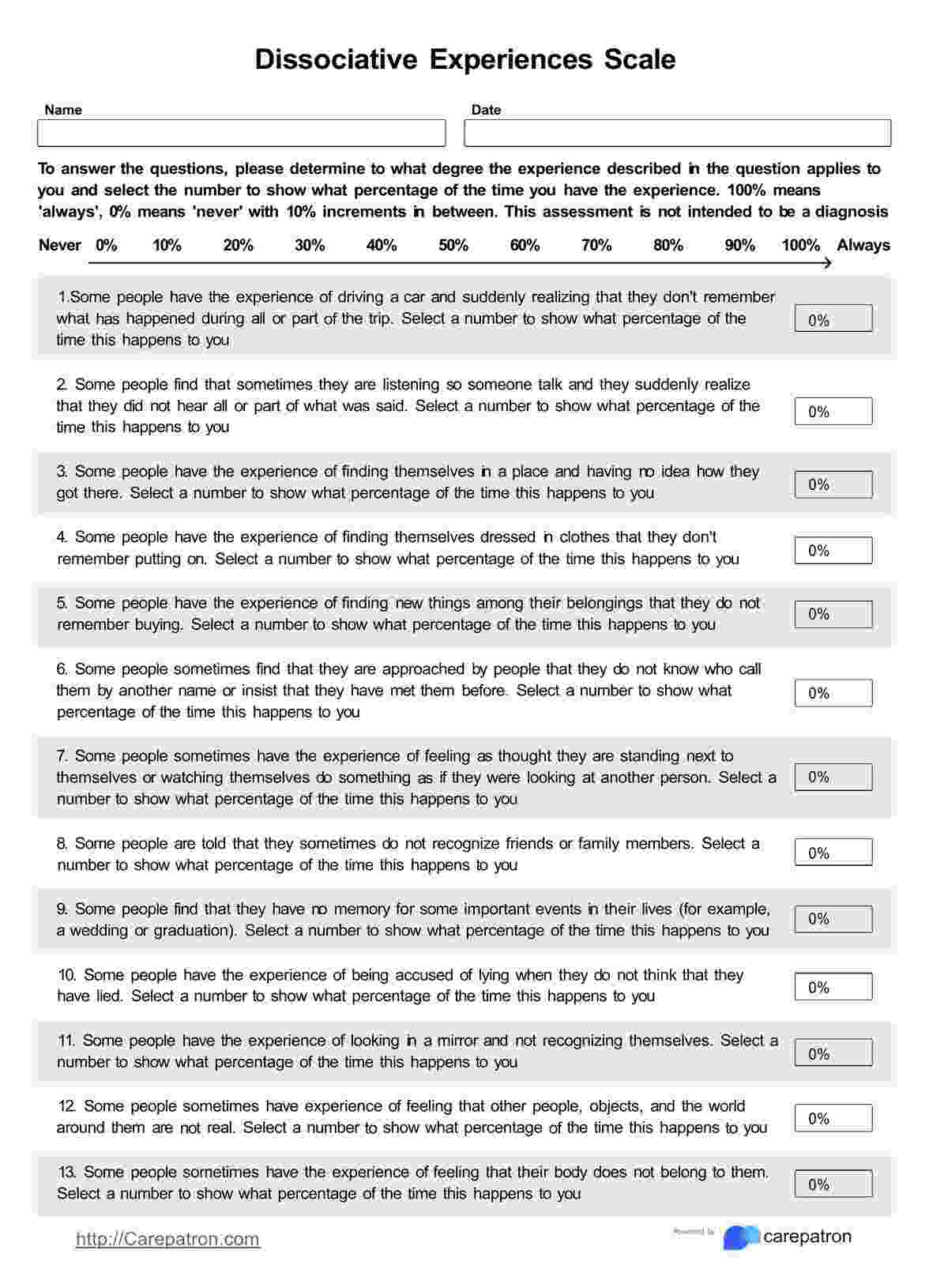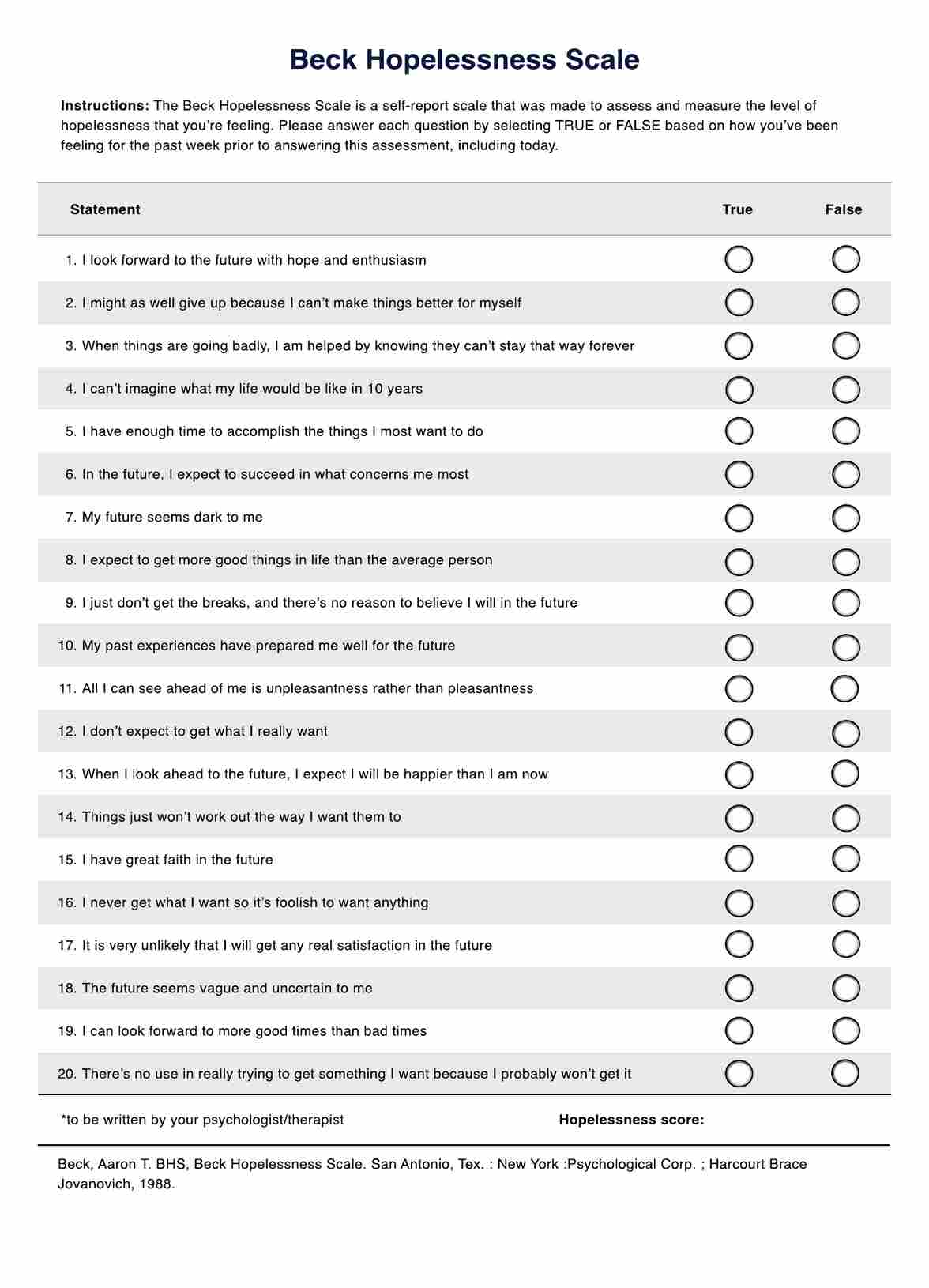Anti-MǬllerian Hormone
Learn about the Anti-MǬllerian Hormone Test, its significance in fertility assessment, and how it's used in reproductive health.
�?�


What is an Anti-MǬllerian Hormone Test (AMH)?
The (AMH) is vital for assessing a woman's reproductive potential. This blood test analyzes a woman's ovarian reserve, which refers to the quantity and quality of eggs in her ovaries. The test is crucial in reproductive medicine and gynecology, providing essential insights into a woman's fertility status.
AMH is predominantly produced by the ovaries in females, and the test measures the hormone levels in a woman's bloodstream. Higher AMH levels generally indicate a more enormous ovarian reserve, which suggests a more significant number of viable eggs available for future conception. On the other hand, lower AMH levels may signify a reduced ovarian reserve, which could indicate conditions like premature ovarian aging or infertility.
The AMH test benefits individuals contemplating fertility treatments such as in vitro fertilization (IVF) or those interested in preserving their fertility. Healthcare providers collect a blood sample from the patient, and the results are typically reported in units like nanograms per milliliter (ng/mL) or picograms per milliliter (pg/mL). The test results guide healthcare professionals in tailoring fertility treatment strategies and offering personalized guidance on family planning.
The AMH test is non-invasive and is usually performed in a clinical setting. The results are reliable and accurately assess a woman's ovarian reserve. The test benefits women who want to conceive or face fertility issues later in life. It helps them make informed decisions about their reproductive health and take appropriate measures to preserve their fertility.
Anti-MǬllerian Hormone Template
Anti-MǬllerian Hormone Example
How does it work?
Access the Form
Locate a printable Anti-MǬllerian Hormone Test form, often available on healthcare provider websites or fertility clinic resources.
Download or Print
Download the form to your computer or print a hard copy to fill out.
Personal Information
Complete your details, including your full name, date of birth, and contact information on the form.
Medical History
Provide information about your medical history, including any preexisting health conditions or medications you are currently taking.
Consent
Carefully read and sign the consent section of the form, indicating your agreement to undergo the AMH test. This step is legally and ethically necessary.
Sample Collection Date
Specify the date when you plan to have your blood sample collected for the AMH test on the form.
Laboratory Information
If required, include details about the laboratory where your blood sample will be sent for analysis on the form.
Patient Signature
Sign the form authorizing the AMH test and ensuring compliance with healthcare regulations.
Blood Sample Collection
Visit a healthcare facility or laboratory on the specified date to have a healthcare professional draw a blood sample from your arm using a needle and collection tube.
Laboratory Analysis
The collected blood sample is sent to a clinical laboratory for specialized analysis.
Skilled technicians measure the levels of Anti-MǬllerian Hormone in the blood.
Measurement Units
AMH levels are typically reported in nanograms per milliliter (ng/mL) or picograms per milliliter (pg/mL).
Interpretation
Healthcare providers interpret the AMH test results, with higher levels suggesting an enormous ovarian reserve and lower levels potentially indicating a reduced ovarian reserve.
When would you use this test?
The Anti-MǬllerian Hormone Test (AMH) is a valuable diagnostic tool with several critical applications across various medical specialties. Practitioners from gynecology, reproductive medicine, endocrinology, and fertility specialists often utilize this test for the following purposes:
- Assessment of Ovarian Reserve: Gynecologists and fertility specialists use the AMH test to evaluate a woman's ovarian reserve, which provides essential information about her fertility potential. This assessment is particularly relevant for pregnant women seeking fertility treatments.
- Fertility Treatment Planning: Fertility specialists rely on AMH results to tailor fertility treatment plans, such as in vitro fertilization (IVF) or ovulation induction. AMH levels help determine the appropriate dosage of medications and predict the likelihood of treatment success.
- Identification of Reproductive Disorders: Endocrinologists and gynecologists may use the AMH test to identify reproductive disorders like polycystic ovary syndrome (PCOS) or premature ovarian insufficiency. Early detection through AMH testing allows for timely intervention and management.
- Monitoring Ovarian Aging: Gynecologists and reproductive specialists monitor AMH levels to assess the rate of ovarian aging in patients. This information aids in counseling women about their reproductive timeline and options.
- Egg Freezing Decisions: Women considering elective egg freezing to preserve fertility can benefit from AMH testing. It helps them make informed decisions about the optimal timing for this procedure.
- Evaluation of Ovarian Tumors: Oncologists may use the AMH test in assessing ovarian tumors. Elevated AMH levels can indicate the presence of certain types of ovarian tumors, prompting further evaluation and treatment.�?�
- Research and Academic Purposes: Researchers studying reproductive biology and endocrinology often use AMH tests to gather data and explore new fertility and reproductive health avenues.
What do the results mean?
The results of an Anti-MǬllerian Hormone (AMH) test provide valuable insights into a woman's ovarian reserve, essential for understanding her fertility potential. The interpretation of AMH levels can guide medical decisions and family planning. Here's what common AMH test results generally mean:
High AMH Levels
- High AMH levels (above the expected range for a woman's age) typically indicate an enormous ovarian reserve.
- This suggests that the individual likely has more eggs available for future conception.
- Women with high AMH levels may have a higher chance of success with fertility treatments like in vitro fertilization (IVF).
Normal AMH Levels
- Normal AMH levels, falling within the expected range for a woman's age, are considered optimal.
- It suggests a healthy ovarian reserve, and the individual will likely have a good chance of conceiving naturally.
Low AMH Levels
- Low AMH levels (below the expected range for a woman's age) can be concerning.
- It may indicate a reduced ovarian reserve, potentially posing challenges for conception.
- Women with low AMH levels might have a higher risk of infertility or require more aggressive fertility treatments.
Very Low or Undetectable AMH Levels
- Very low or undetectable AMH levels may signal extremely diminished ovarian reserve.
- This could indicate conditions like premature ovarian insufficiency, where the ovaries cease functioning earlier than expected.
- Conceiving naturally becomes highly unlikely in such cases, and individuals may explore alternative options like donor eggs or adoption.
AMH levels are just one factor in fertility. Other factors like age, medical history, and underlying conditions should be considered. Specialists use AMH results and other assessments to create personalized treatment plans. A free AMH test is covered by a healthcare provider, making fertility evaluation accessible.
Research & Evidence
The Anti-MǬllerian Hormone (AMH) test has emerged as a valuable tool in reproductive medicine and gynecology, supported by a history of scientific research and clinical evidence substantiating its use.
The discovery of AMH dates back to the mid-20th century when researchers were investigating male sexual differentiation. In 1947, Dr. Alfred Jost, a French embryologist, first described the role of MǬllerian inhibiting substance (later known as AMH) in male fetal development. This marked the initial recognition of its significance.
In the late 20th century and early 21st century, scientists and clinicians began to recognize AMH's potential in female reproductive health. The identification of AMH as a marker for ovarian reserve and fertility assessment followed these initial discoveries.
Scientific studies and clinical trials have consistently demonstrated the utility of the AMH test in assessing ovarian reserve. These studies have been published in reputable medical journals, contributing to the robust evidence supporting its use.
Researchers have established that AMH levels correlate with the number of primordial follicles in the ovaries, considered a finite resource representing a woman's ovarian reserve.
Multiple studies have confirmed that AMH levels are relatively stable across the menstrual cycle, making it a convenient and reliable marker compared to other hormone tests.
AMH has been particularly valuable in the context of fertility treatment. Clinicians use it to predict ovarian response to stimulation in vitro fertilization (IVF) cycles, optimizing treatment protocols.
Clinical evidence also supports using AMH testing in diagnosing conditions like polycystic ovary syndrome (PCOS) and premature ovarian insufficiency (POI), aiding in early intervention and management.
References
American Society for Reproductive Medicine. (2023, September 22). Anti-MǬllerian hormone (AMH) test. Retrieved September 26, 2023, from https://medlineplus.gov/lab-tests/anti-mullerian-hormone-test/
American College of Obstetricians and Gynecologists. (2022, March 10). Anti-MǬllerian hormone (AMH) test. Retrieved September 26, 2023, from https://medlineplus.gov/lab-tests/anti-mullerian-hormone-test/
ASRM Fertility Fact. (2022, March 9). Anti-MǬllerian hormone (AMH) test. Retrieved September 26, 2023, from https://medlineplus.gov/lab-tests/anti-mullerian-hormone-test/
Cleveland Clinic. (n.d.). Anti-MǬllerian hormone (AMH) test. Retrieved September 26, 2023, from https://medlineplus.gov/lab-tests/anti-mullerian-hormone-test/
March of Dimes. (2022, August 4). Anti-MǬllerian hormone (AMH) test. Retrieved September 26, 2023, from https://medlineplus.gov/lab-tests/anti-mullerian-hormone-test/
Mayo Clinic. (n.d.). Anti-MǬllerian hormone (AMH) test. Retrieved September 26, 2023, from https://medlineplus.gov/lab-tests/anti-mullerian-hormone-test/
MedlinePlus. (n.d.). Anti-MǬllerian hormone test. Retrieved September 26, 2023, from https://medlineplus.gov/lab-tests/anti-mullerian-hormone-test/
ReproductiveFacts.org. (2022, July 5). Anti-MǬllerian hormone (AMH) test. Retrieved September 26, 2023, from https://medlineplus.gov/lab-tests/anti-mullerian-hormone-test/
Resolve The National Infertility Association. (2023, September 13). Anti-MǬllerian hormone (AMH) test. Retrieved September 26, 2023, from https://medlineplus.gov/lab-tests/anti-mullerian-hormone-test/
Society for Reproductive Medicine. (2022, April 12). Anti-MǬllerian hormone (AMH) test. Retrieved September 26, 2023, from https://medlineplus.gov/lab-tests/anti-mullerian-hormone-test/
Commonly asked questions
Gynecologists, fertility specialists, and reproductive endocrinologists typically request AMH tests. Patients concerned about their fertility may also request one.
A blood sample is collected and sent to a lab for analysis. Results help determine fertility potential, guide treatment, and assess ovarian health.
The test itself takes only a few minutes to draw a blood sample. Results are usually available within a few days to a week, depending on the lab and healthcare provider.


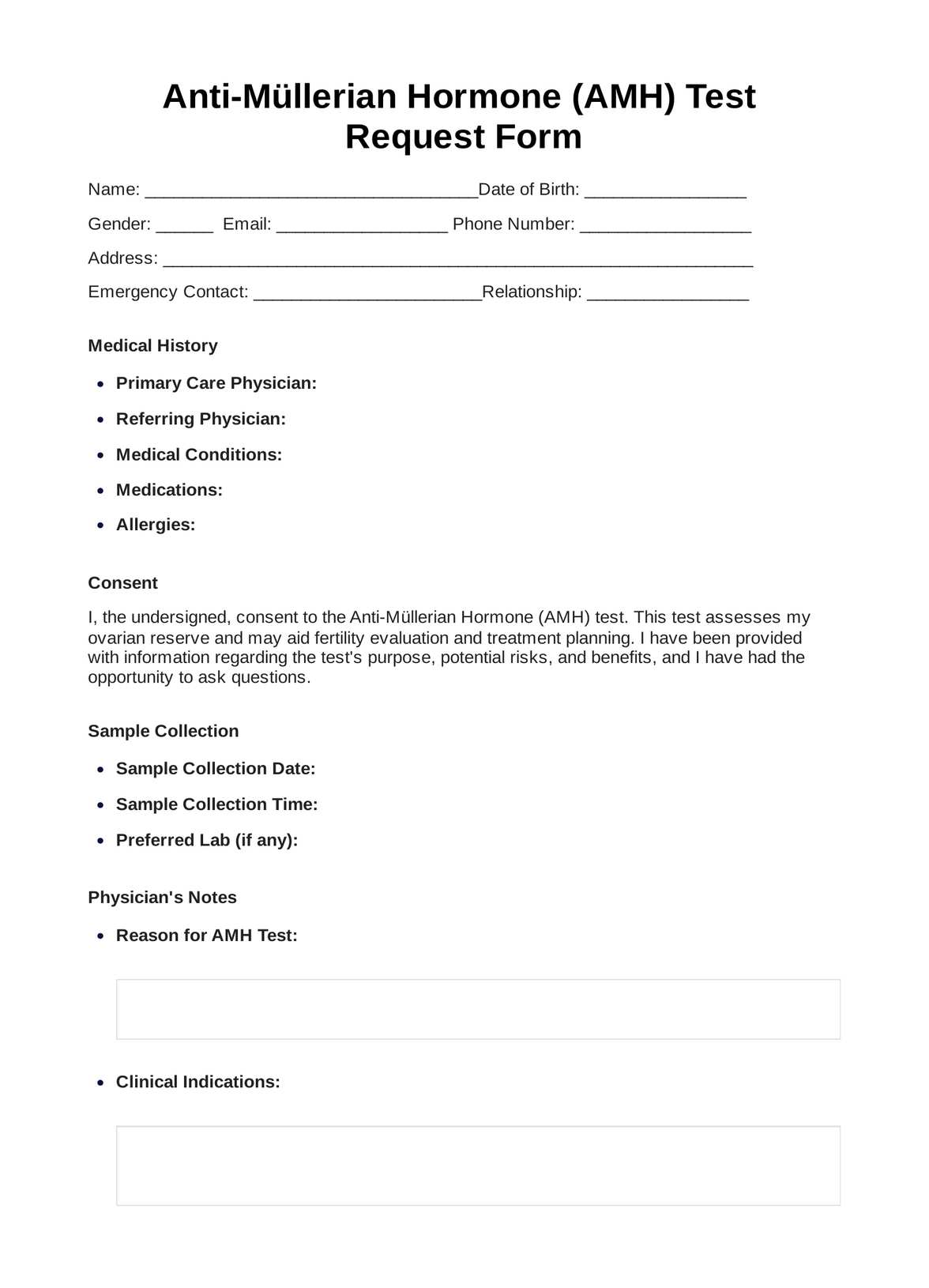
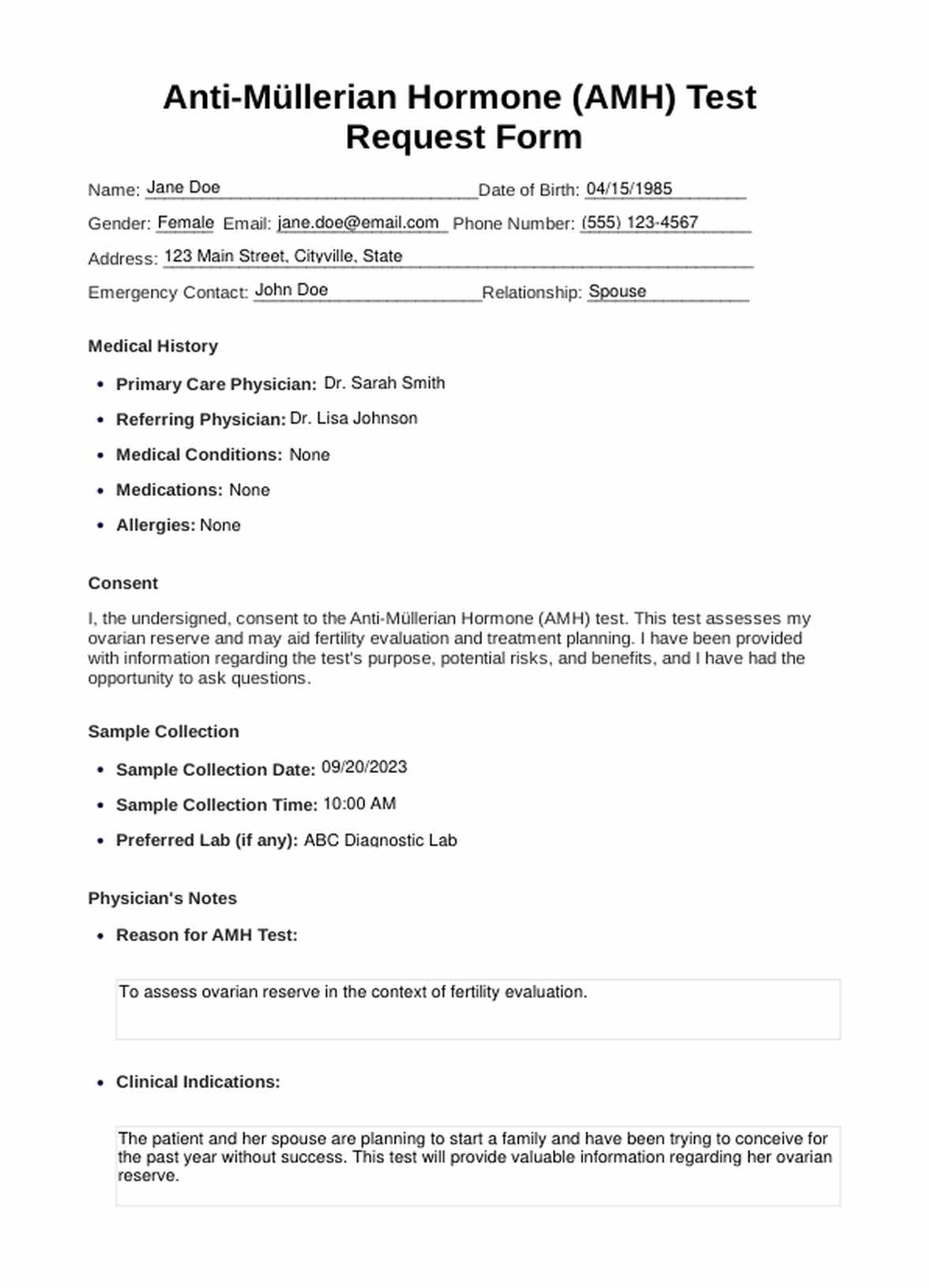















-template.jpg)


